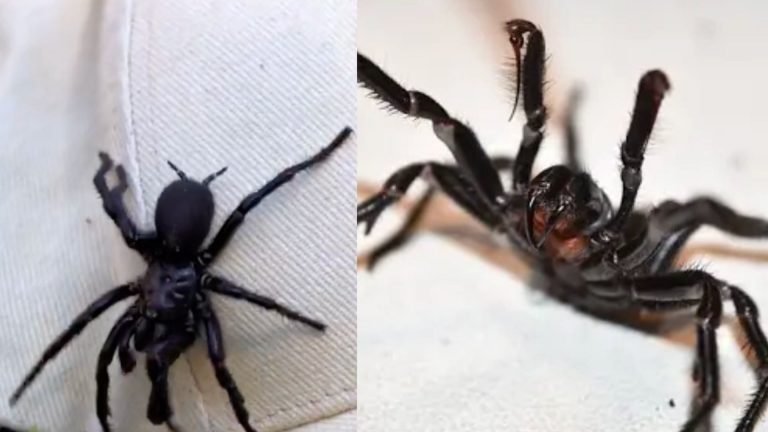The Australian Reptile Park has welcomed Sydney's largest male funnel-web spider, 'Hercules', into its anti-venom programme. With fangs capable of piercing a human fingernail, this massive spider was discovered on the Central Coast, 50 miles north of Sydney, by a member of the public.
The spider was initially surrendered to a local hospital, but was later recovered by experts from the Australian Reptile Park, who identified it as the largest male specimen ever received from the public in Australia. This funnel-web spider typically ranges from one to five centimeters in length, and is an astonishing 7.9 centimetres, surpassing the previous record holder, 'Colossus', from 2018.
The Australian Reptile Park, known for its research into venomous creatures, is excited about Hercules' potential contributions to their poison control program. The spider will undergo 'milking', a process to extract the venom, which is crucial to producing life-saving antivenom.
Emma Tenney, the park's spider keeper, expressed her enthusiasm, saying:
“While female funnel-web spiders are venomous, males have proven to be even more deadly. With a male funnel-web of this size in our collection, venom production can be enormous, proving incredibly valuable to a garden poison program.”
Since the beginning of the poison control program in 1981, there has not been a single death in Australia due to a funnel-web spider bite.
The funnel web spider is known for its aggressive behavior
Funnel-web spiders, such as the Sydney funnel-web spider, are easily recognized by their shiny, dark brown to black appearance and the finger-like spindles at the end of their abdomen. Male spiders of this species have a large mating spur on their second pair of legs. Known for their aggressive behavior when threatened, they stand up and show off impressive fangs.
Females are generally larger but less venomous than their male counterparts. They are commonly found in woodland areas and suburban gardens, especially in the eastern regions of Australia.
These spiders are skilled hunters, relying on their burrowing habits to catch prey. They create silk lines around the entrance to their burrows, allowing them to sense and capture insects such as beetles, cockroaches and small lizards.
Despite their fearsome reputation, they contribute to the ecosystem by controlling pest populations. While their venom can be dangerous to humans, proper understanding, first aid measures, and poison control programs have greatly reduced the risk of deaths from bites.
What makes these spiders thrive in Australia?
The wet and wet weather along the east coast of Australia has created ideal conditions for funnel-web spiders to thrive. Sydney funnel-web spiders are found mostly in woodland areas and suburban parks extending from Sydney, Australia's most populous city, to the coastal city of Newcastle in the north and the Blue Mountains in the west.
Despite their fearsome reputation, Sydney funnel-web spiders play a vital role in the ecosystem by controlling the populations of various insects. Their unique burrowing habits and nocturnal hunting techniques make them interesting subjects for scientific study.
While their bites are dangerous, the implementation of proper first aid techniques, such as the compression/immobilization bandage method, and the availability of antivenom, have ensured that deaths are rare.

